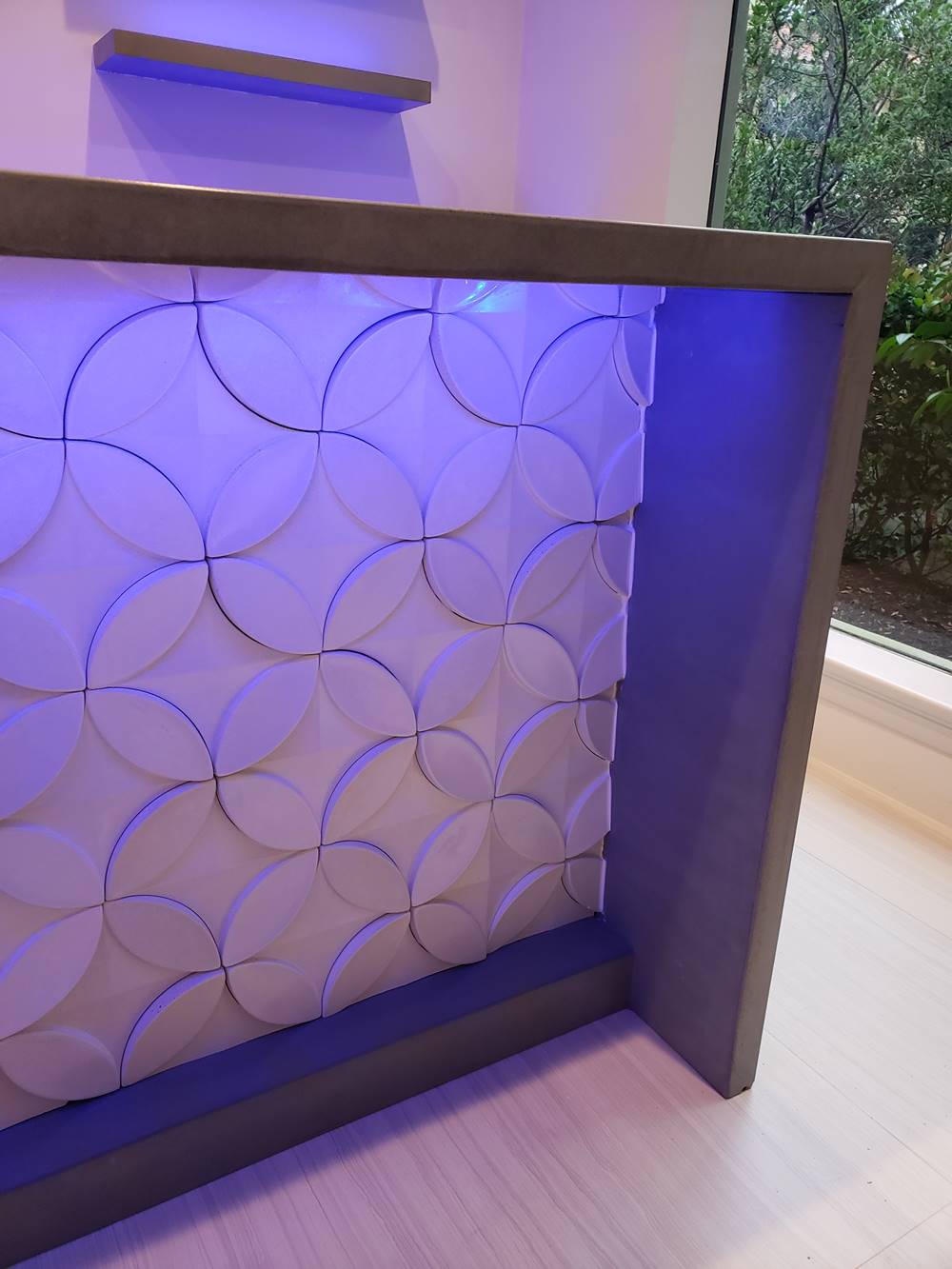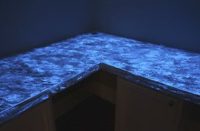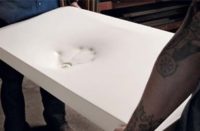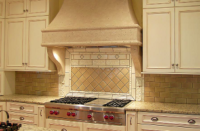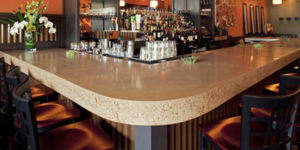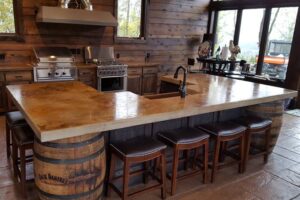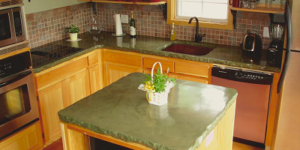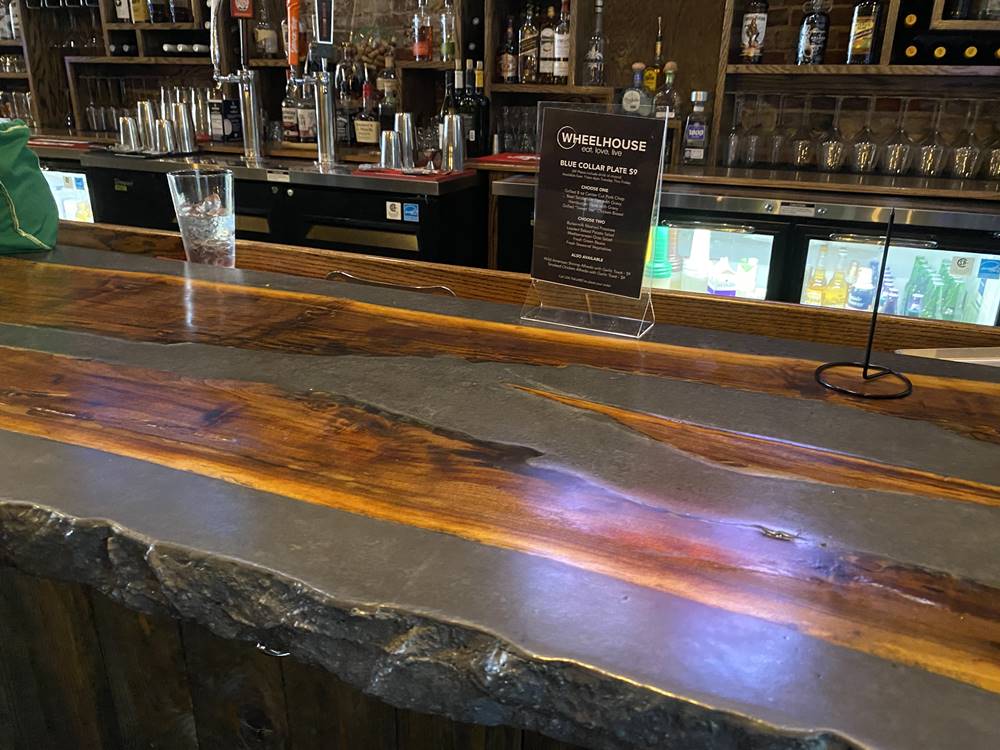
Part 2 of a random sampling of concrete countertop creativity continues to highlight the ingenuity of today’s decorative concrete artisans. Read on for an overview of three more projects:
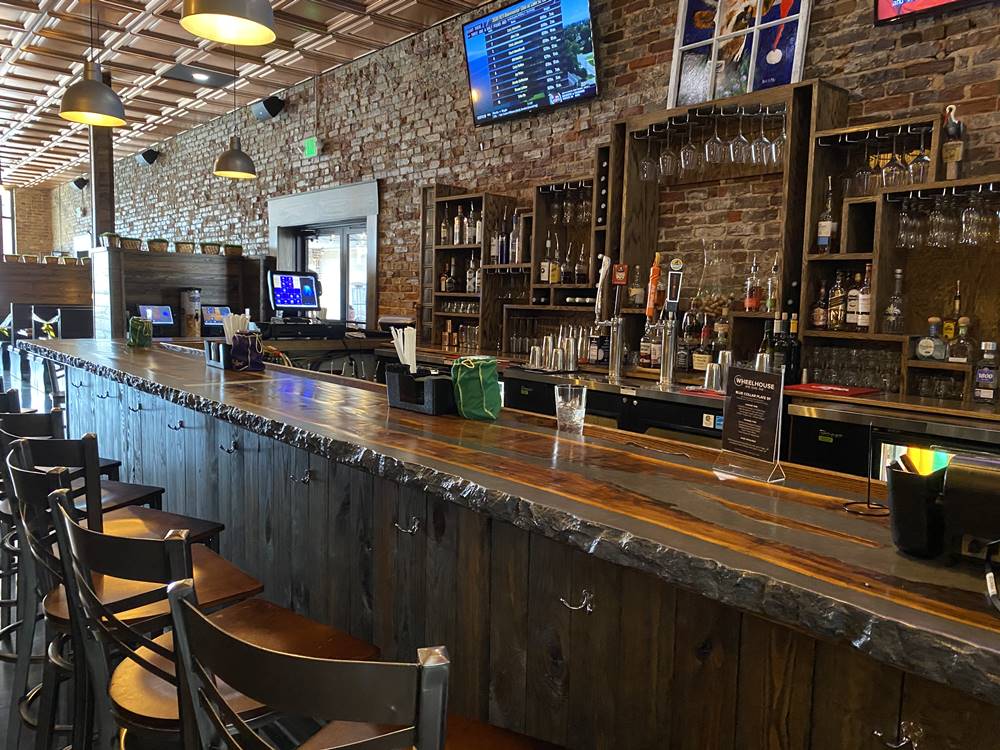
An arranged marriage
It’s no secret that concrete and wood don’t make the best bedfellows. Nonetheless, with a little determination and persistence, a skilled artisan can make the union work.
Such was the case for Tamara Gilgenast of Concrete In-Counters in Enterprise, Alabama. Chef Jon Gibson hired her to make the bar countertop for his rustic Wheelhouse restaurant in Opp, Alabama. Gibson had some beautiful reclaimed 2-inch-thick black walnut slabs, complete with holes that once housed a beehive. He wanted her to embed the wood in concrete.
The task started off simple enough. However, “The job grew into one of the greatest learning experiences of my time working with concrete,” Gilgenast says.
For starters, she had to plane the wood until it was ¾-inch-thick to work it into the 2-inch-thick GFRC bartop. “The planing alone took about 10 hours,” she says. “My husband, Ralph, was on one side of the planer and I was on the other. We just kept feeding the pieces through. We planed down several and then had to select the ones we wanted to use.”
Even after they planed it, the wood still wanted to twist and warp. So Gilgenast used heat to dry it out until it had a moisture level below 12%. The wood was then force-straightened, sometimes with clamps, until it would lay flat enough in the forms to secure it. But once placed, the look wasn’t to her liking. It just looked like a huge piece of wood.
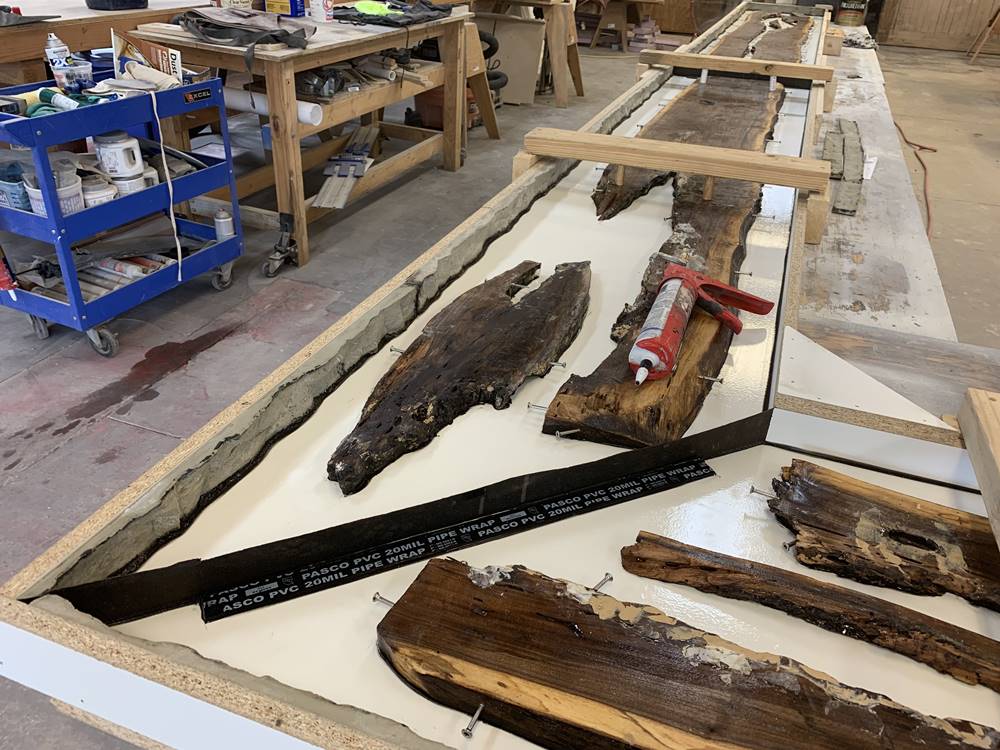
Forming the union
So she broke the pieces where they’d naturally break and re-placed them back into the forms, rearranging as artistically necessary. Once flat enough, they screwed stainless-steel anchor screws into each piece. “They had to be stainless-steel,” she says, so they wouldn’t corrode. “We must have used $200 worth of them.”
They then sealed the wood with several coats to guard against moisture seepage from the concrete. Finally, they siliconed each piece into place.
In the beehive areas, Gilgenast dammed up the holes’ underside with clay and filled the voids with clear epoxy. If you sit at the bar, she says, you can peer down into them.
After long discussions with her friend and mentor, Ben Ashby of StoneCrete Systems, Gilgenast worked out the issues on how to form a lasting concrete and wood union. “The concrete contained very little water,” she says. Instead, “Extra plasticizer was used to decrease the likelihood of expansion and contraction. This reduced the possibility of the wood and concrete separating from each other.”
This job, more than any other she has ever tackled, caused high job fatigue, she admits. “Even after the pieces had been flipped and stripped, there was a lot of finish work.” And even though they had been abundantly careful, a little concrete seeped under the wood in a few areas. She had to sand that off before finishing and sealing the top.
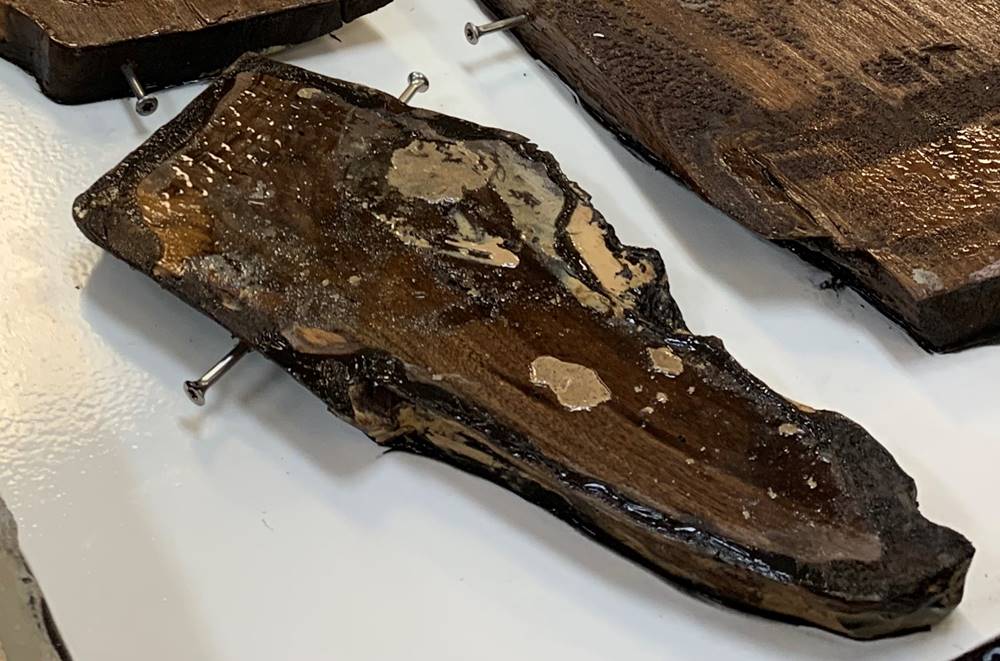 |
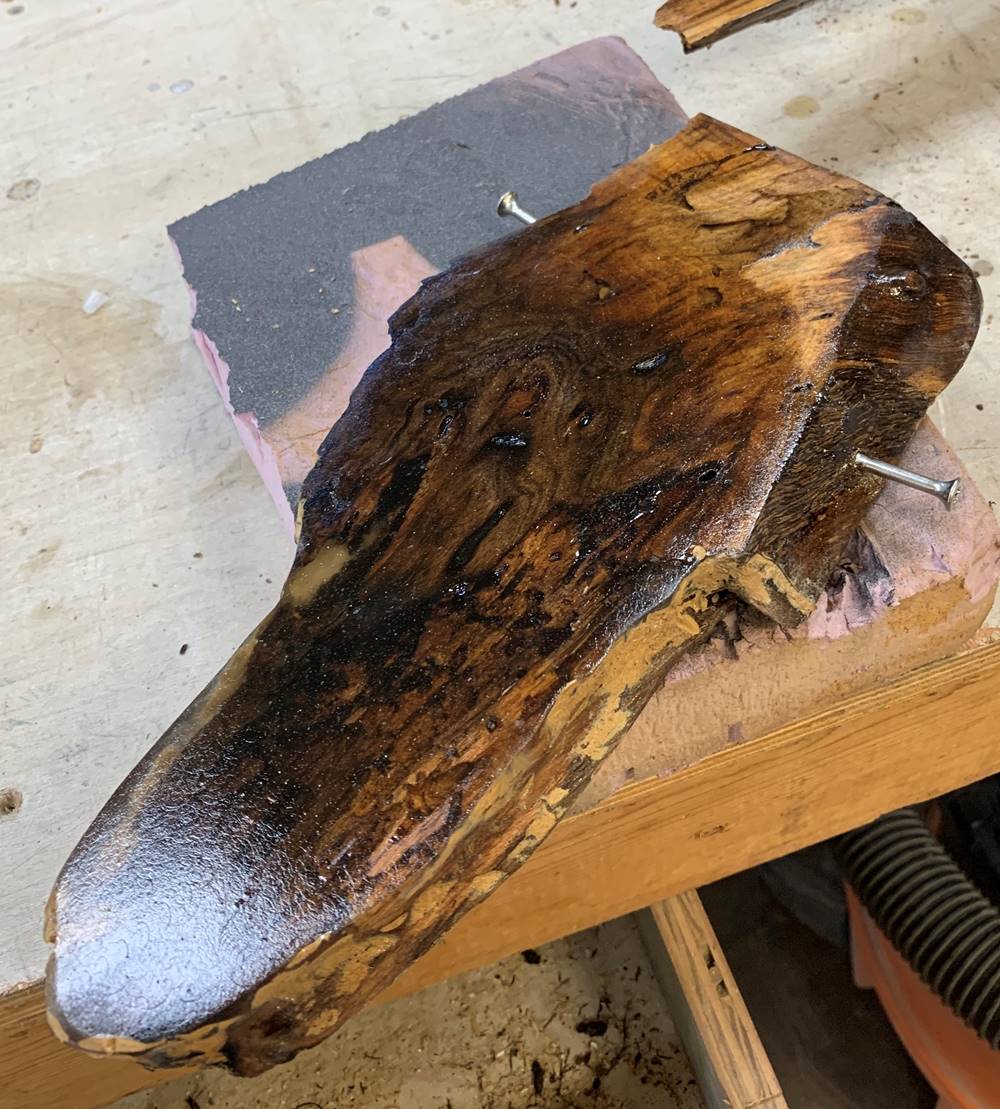 |
Gilgenast used Ashby Super Seal and CounterSeal 3 to seal the three 20-inch by 10-foot sections. She integrally colored the countertop with a mix of Graphite and Kailua. Finally, she finished the edges with Ashby’s Broken Flagstone edge forms.
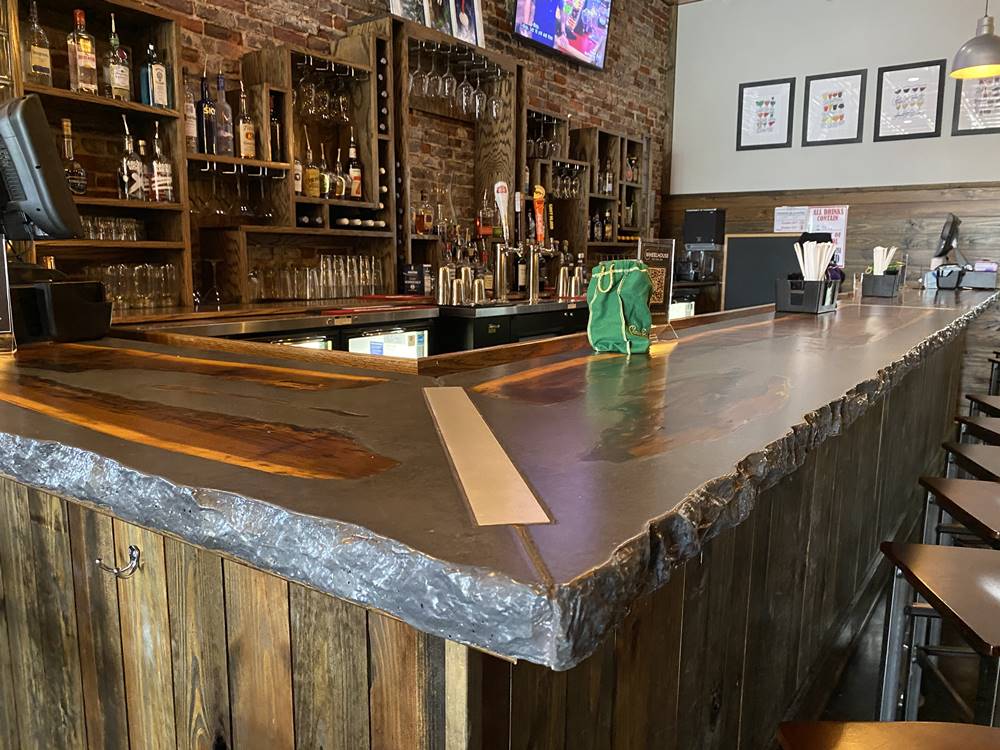
The real deal: Concrete
Justin Burd is one of those concrete artisans who likes to show off what concrete can do. “I’m not a big fan of making concrete look like something else,” says the owner of Nevrest in Chattanooga, Tennessee.
An outdoor enthusiast whose passion centers on combining concrete, steel and wood, he focuses on uniqueness. “I don’t like to do something I’ve seen or repeat something I’ve done before.”
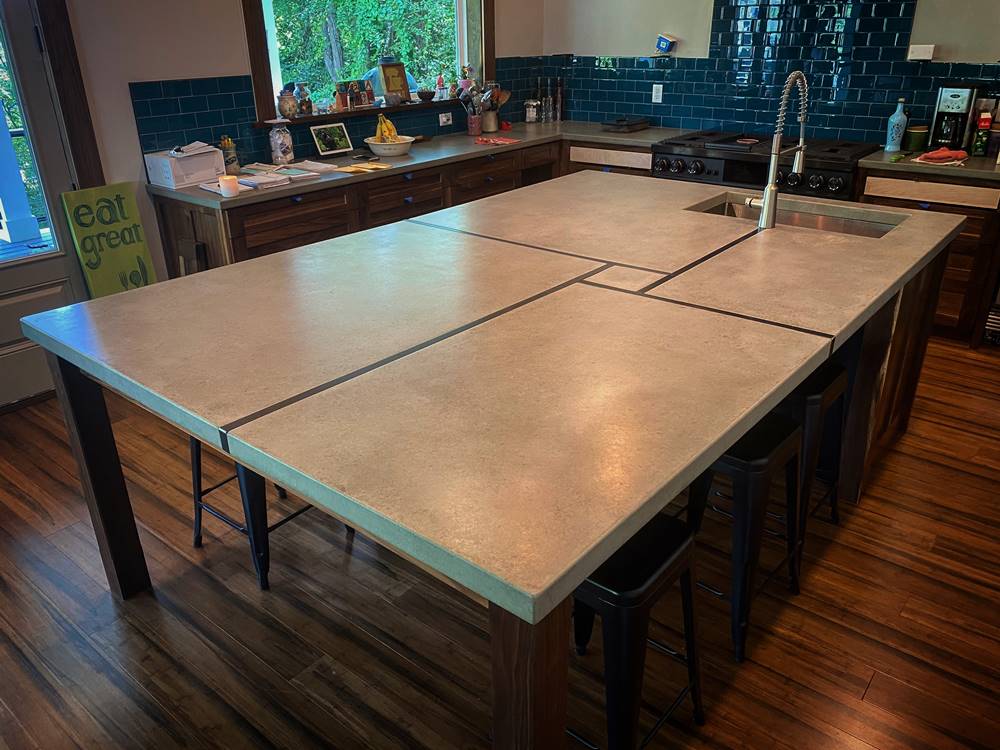
Photo courtesy of Nevrest
Still, he admits, he’s “kind of obsessed” with the “Golden Ratio” — which in its simplest terms can be defined as “a + b is to a as a is to b.” He bases a lot of his creations on this age-old formula.
“I find this formula to be very pleasing to the eye,” he says. “I followed this rule to create the lines or sections that created the design within this countertop.”
The 6-by-10-foot countertop was precast upside down as one solid piece supported by four legs and cabinetry at one end. Normally, Burd says, he would have cast a countertop this size as two pieces. He would then marry them together and strategically hide the seams.
The carbon-steel bars that sectioned off the countertop weren’t cast in the concrete but were inlaid as a final touch. The grooves for the metal were created with PVC, which was later stripped out to create the voids.
Mix Design
For the mix, Burd used locally sourced gray portland cement and sand. He mixed these with Buddy Rhodes’ GFRC Ultra Plus and Titanium White pigment.
The kitchen countertop weighed 750 pounds and took eight men to get it into the house and set up.
“There’s such a variety of things you can do with concrete,” Burd says. “It’s good to be different.”
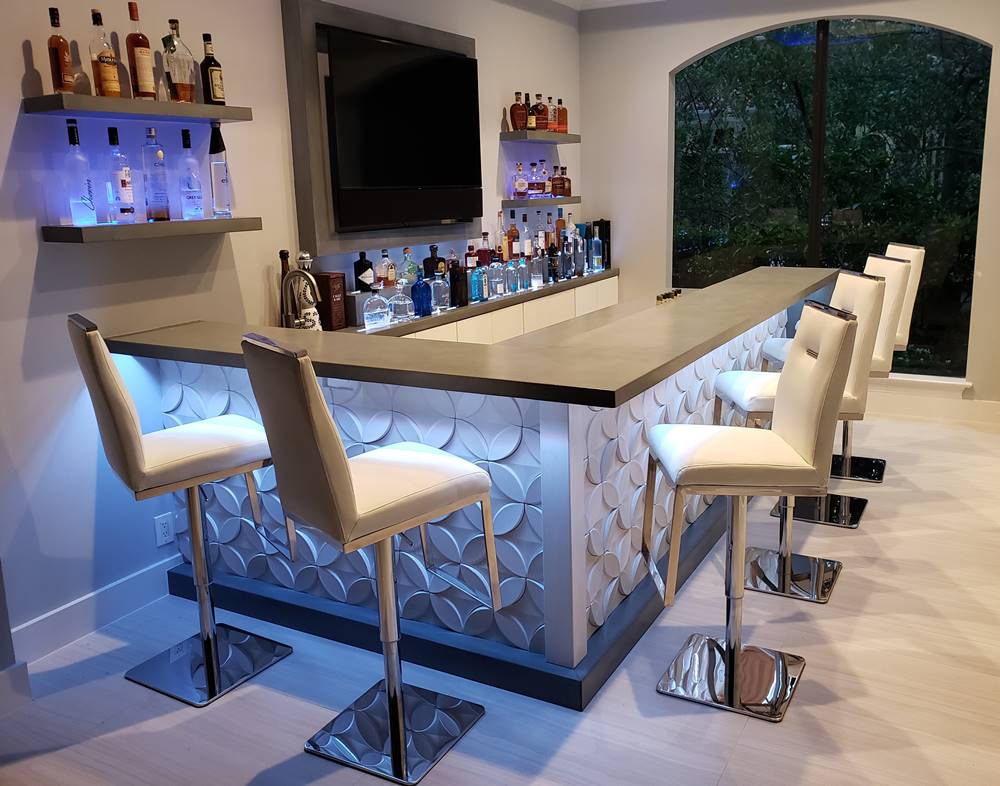
Photos courtesy of Thiel Studios
A toast to new business
Sleek and sophisticated are hallmarks of the countertops and their accoutrements that Josh Thiel of Thiel Studios regularly turns out. This bar he completed in a high-end home in Palm Beach Gardens, Florida, in January 2020 testifies to that fact.
“Everything was pretty basic,” but far from mundane, says Thiel, who recently relocated from southern Florida to Charlotte, North Carolina. The one-piece, two-tiered, natural-gray upper countertop was roughly 7-by-10 feet with a waterfall leg at one end.
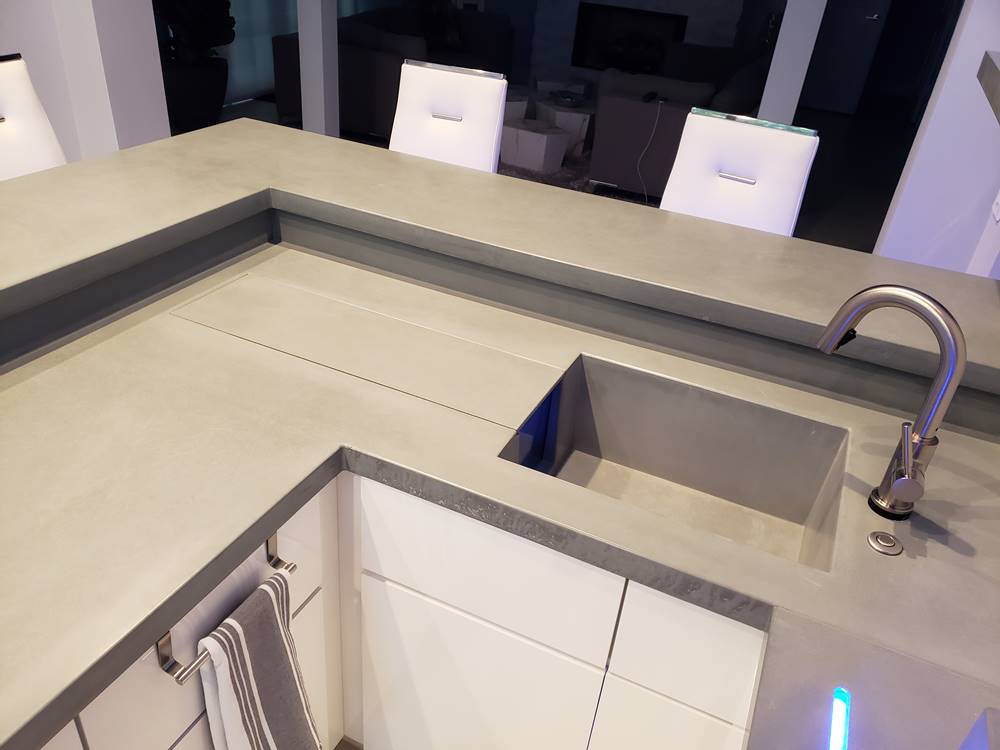 |
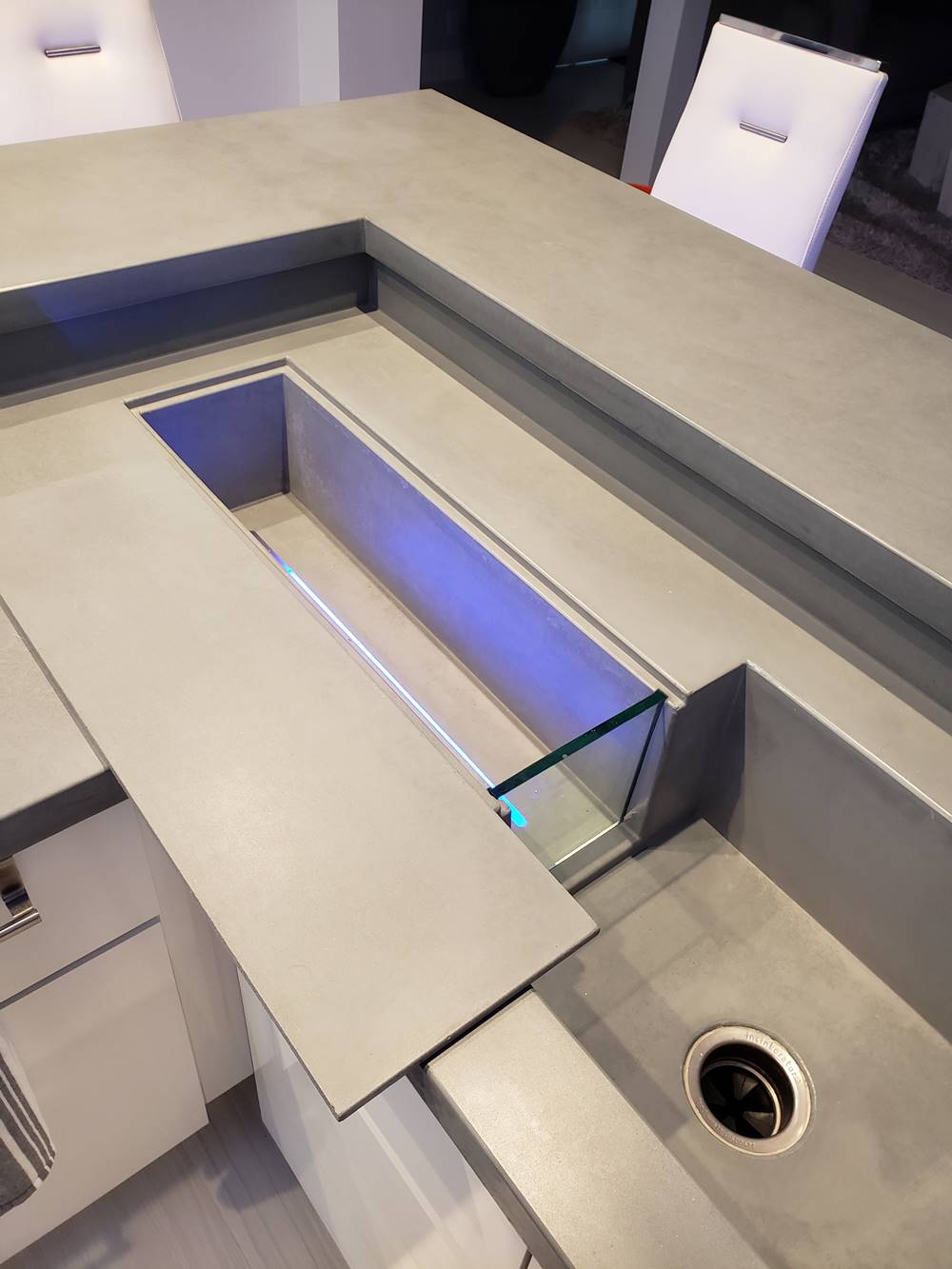 |
The slightly smaller, lower countertop contains an integrated sink and a champagne trough that’s also good for icing beer. With a removable glass partition, the trough easily drains into the sink after use. It’s a popular option among customers, says Thiel, who first came up with the idea back in 2015.
3-D tile front and center
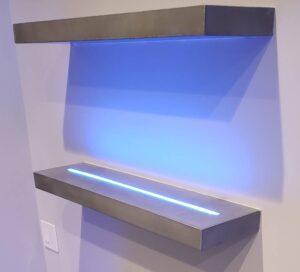
Other bar components include bottle podiums with integrated LED lighting for the liquor collection stored along the wall. Above the bar, floating shelves display bottles and a TV surround secures the flatscreen and hides its wires.
Thiel used a Buddy Rhodes GFRC mix to make the seamless countertops and other bar components, except for the 3-D architectural tiles beneath the countertops. He produced them with an ultra-lightweight mix he designed that weighs half the amount of regular concrete.
Thiel’s newest business, Verticraft, hasn’t yet officially launched. Eventually, the tile company will have off-the-shelf designs available for purchase, as well as offer custom design services.
“This job was my first test run with the tiles,” Thiel says. “It was a collaboration of two businesses — Thiel Studios and Verticraft — coming together for one project.”
